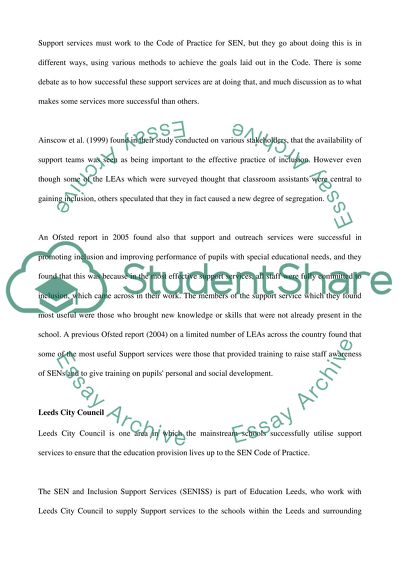Cite this document
(“Support Services and Mainstream Schools Essay Example | Topics and Well Written Essays - 1500 words”, n.d.)
Support Services and Mainstream Schools Essay Example | Topics and Well Written Essays - 1500 words. Retrieved from https://studentshare.org/miscellaneous/1515151-support-services-and-mainstream-schools
Support Services and Mainstream Schools Essay Example | Topics and Well Written Essays - 1500 words. Retrieved from https://studentshare.org/miscellaneous/1515151-support-services-and-mainstream-schools
(Support Services and Mainstream Schools Essay Example | Topics and Well Written Essays - 1500 Words)
Support Services and Mainstream Schools Essay Example | Topics and Well Written Essays - 1500 Words. https://studentshare.org/miscellaneous/1515151-support-services-and-mainstream-schools.
Support Services and Mainstream Schools Essay Example | Topics and Well Written Essays - 1500 Words. https://studentshare.org/miscellaneous/1515151-support-services-and-mainstream-schools.
“Support Services and Mainstream Schools Essay Example | Topics and Well Written Essays - 1500 Words”, n.d. https://studentshare.org/miscellaneous/1515151-support-services-and-mainstream-schools.


